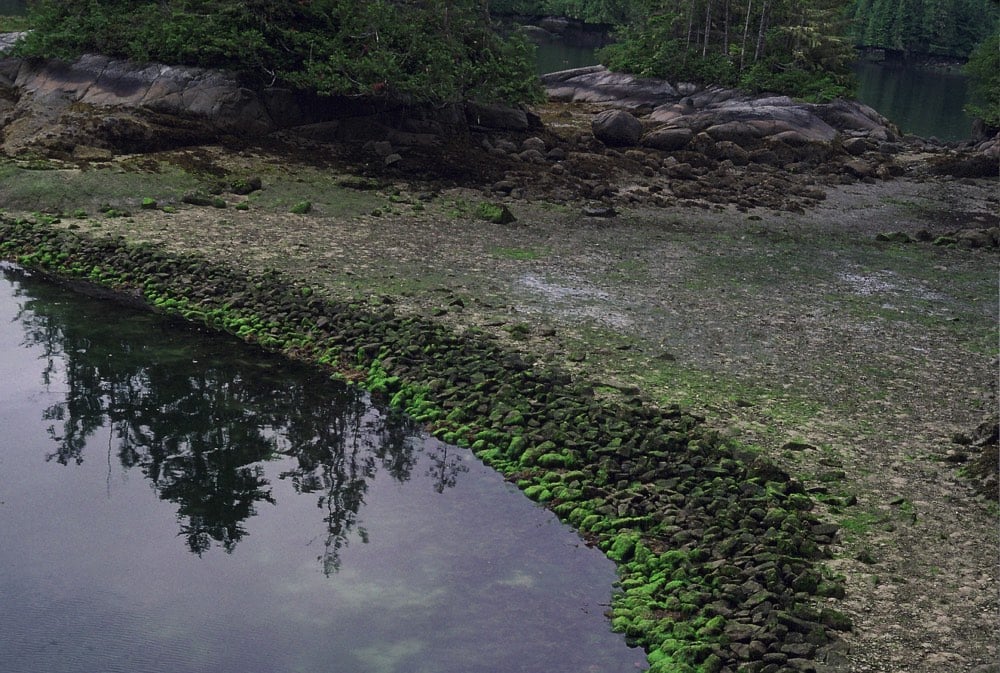Clam Gardens, an Ancient Sea Farming Technique
Despite much recent evidence to the contrary (see Charles Mann’s 1491 for example), the view persists that a pristine wilderness awaited European conquerors upon their arrival to the Americas because the existing population didn’t really do a whole lot to alter the landscape.1 Take clam gardens for instance. In the Pacific Northwest, indigenous people constructed these coastal structures to deliberately encourage the production of shellfish.
These features are made by constructing rock walls at the low tide line along the edges of bays and inlets, transforming naturally sloping beaches or rocky shorelines into productive, level beach terraces. While clam garden morphology, character, and setting can vary greatly, they generally consist of a well-sorted boulder wall built at the lowest tide line and a terrace on the landward side of the wall. By building the walls at particular heights in relationship to the tides (“tidal heights”), these features expand the zone of the beach where clams thrive. According to local knowledge, clamming beaches, including those associated with clam gardens, were kept clear of large rocks as another means to increase clam habitat. The flattened terrace created by garden walls can range in size from a few square meters on small beaches to well over a kilometer in length. These larger beaches are more like vast fields than ‘gardens’ in size.

Researchers believe thousands of these gardens and fields were built and have found clam gardens dating back at least 2000 years. The garden’s construction may also have encouraged the growth and development of other animals as well.
While much of the Network’s focus so far has been on clams in the clam garden terraces (mainly butter clam, littleneck, horse clam, and cockles), our observations and that of our First Nations collaborators suggest that the boulder walls themselves create productive rocky reef habitat for octopus, sea cucumber, whelks, chiton, red turban snails and other critters. Many of these are valued foods for coastal First Nations.
Update: A clam garden is called K’yuu ḴudhlḴ’aat’iija in the Haida language and lux̌ʷxiwēy in the Kwakʼwala language. Both languages are endangered, with relatively few speakers and little transmission to the youth in those communities. (via @lilsheba)
This is a prime example of what Sam Arbesman calls a “mesofact”.I’m guessing most people reading this learned in school that the Americas were sparsely populated and almost pristine before Columbus showed up, but subsequent research over the past 20 years has shown that this is very much not the case. ↩





Stay Connected